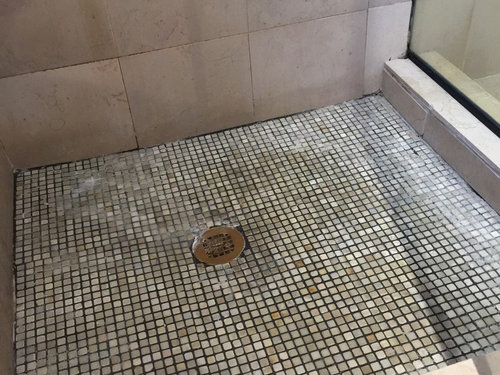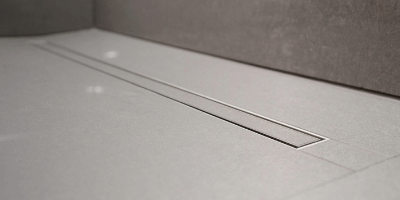How To-Ways to-Guidelines for Handle-Manage-Tackle Your Own-DIY-Personal Shower Drain-Bathroom Drain-Drainage System Installation-Setup-Project
How To-Ways to-Guidelines for Handle-Manage-Tackle Your Own-DIY-Personal Shower Drain-Bathroom Drain-Drainage System Installation-Setup-Project
Blog Article
This great article following next relating to How to Install a Shower Drain is truly attention-grabbing. Don't bypass it.

Upgrading a bathroom is just one of the more prominent house improvement tasks. Handling the plumbing for draining your shower can be extremely easy unless you go overboard.
Managing Your Own Shower Drainpipe Setup Task
You can physically construct a collector for your new shower, however you really require to consider it. Do you really intend to enter into the difficulties of getting the sloping appropriate, as well as seeing to it every element of it is waterproof? And I indicate every element! It is much easier to merely get a pre-cast collection agency online or at your neighborhood Lowes, Residence Depot or equipment store. Building one may sound like a terrific suggestion, however you will possibly feel in different ways after a couple of hours.
No matter exactly how you go about obtaining a pan, you need to strive to use one that has the drainpipe situated in the exact same area as the initial frying pan. Moving the drain pipes can be a job, particularly if the building contractor made use of an one-of-a-kind framing structure. If you are figured out to relocate the drain, you are going to need to cut down the pipe or lengthen it, which may mean destroying huge chunks of the floor. Put another way, you are mosting likely to be looking at a several weekend break job.
Presuming we have our drain aligned, the real connect is fairly basic. The drain pipe ought to be dealing with vertical as much as the collector. It will certainly usually appear like a "U", which suggests it works as a cleanout to keep unpleasant smells from returning up from the drainpipe. To connect the drainpipe, you are going to develop a water tight connection in between a drain cap on the top of the pan and the water drainage pipeline. Systems vary, but you are usually mosting likely to do this by putting a combining piece on the top of the drainage pipeline. This is after that covered with gaskets and literally screwed into the drain cap. The drain cap must serve as a locknut, to wit, it screws directly onto the coupling.
The challenging part of this procedure is getting your drainpipe cap to fit into a water tight setting in the pan. This is accomplished by withdrawing the drain cap when you make certain whatever fits together. Then, you put plumbings putty around the bottom of the cap and afterwards screw it back on. The putty needs to create a tight seal in between the cap as well as the shower pan, which maintains water from flowing under it and right into the mounting under the shower.
Obviously, bathroom showers can be found in a wide array of styles these days. If you buy an enthusiast, they usually come with plumbing guidelines or the store can note anything uncommon you should know. It appears complicated, however is normally quite straight forward. Have a good time!
Whether you are a bathtub or shower individual, most people seek shower only options when acquiring a home. This basic truth suggests greater than a couple of home owners invest a weekend updating or setting up showers in their bathrooms. Thankfully for you, it is a fairly straightforward procedure.
An enthusiast or pan describes the straight surface located at the end of the shower. The collector commonly contains a non-slip surface a little banked towards the center or anywhere the drain lies. Incorporated with three to 4 inch wall surfaces around the side, the goal of your shower drainage plumbing is to obtain the water to flow to and down the tubes.
How To Install & Replace A Shower Drain In 5 Steps
Replacing a shower drain, or installing one for the first time, often requires a plumber, but if you’re confident in your DIY skills then you may be able to do it yourself. Your new shower drain should come with specific installation instructions, so take time to familiarise yourself with those before you get started. There are several types of shower drain, and the one you choose or are supplied with will depend on your shower tray, your pipes and the manufacturer’s recommendations. All Mira shower trays are compatible with compression-style shower drains, which attach to your home’s drainpipes with compression washers and nuts. Here’s an overview of how to install this type of drain.
How to install a compression-style drain
Please bear in mind that these are general instructions, and you should refer to the manufacturer’s recommendations to install your shower drain.
Trim the drainpipe
The drainpipe should come up to 2cm below the lip of the shower drain. You might need to lift the shower base on to mark the right height, and then remove it again before trimming the drainpipe with a hacksaw. Ensure the cut is flat and level.
Attach the drain assembly to the shower base
Apply silicone caulk to the lower rim of the drain assembly and insert it into the shower base from the top side of the base. This should be done before the base is put in place on the floor. Press the drain assembly firmly into place so that the caulk forms an even seal.
Slide the rubber washer and slip washer on to the drain assembly from underneath the shower base, then thread the drain nut on and tighten it with pliers.
Wipe away any excess caulk that has oozed out.
Put the shower base in position
Carefully position the shower base so that the drain assembly lines up with the drainpipe and fits inside it. It’s a good idea to get someone else to help out, and it’s usually easier to set the back of the base down first, and then lower the front of the base down.
Insert the compression gasket and nut
Slide the rubber compression gasket down into the drain opening so that it fits around the drainpipe. The top of the gasket should line up with the top of the pipe, or be slightly lower.
Drop the compression nut into the drain opening and use the fitting tool that will likely have been provided and a screwdriver to tighten the nut. As you tighten it, the gasket will be compressed against the drainpipe, creating a watertight seal.
Fit the metal strainer
Press the metal strainer into the drain opening, making sure the top surface is lower than the shower floor around it.
And there you have it, a brand-new shower drain! Allow the silicone to set for a full 24 hours before using the shower.
Cleaning and maintenance of your shower drain
Shower drains can quickly become clogged with hair and a build-up of product, which can lead to bad smells and can prevent your shower water from draining efficiently.
To maintain your shower drain, clear out any strands of hair that gather on the metal strainer after each shower. We recommend cleaning your shower drain thoroughly once a month using boiling water to loosen up soap scum and get things moving.
https://www.mirashowers.co.uk/blog/how-to/how-to-install-replace-a-shower-drain-in-5-steps/

I hope you enjoyed our section on How to Install a Shower Drain in a Basement. Thank you for taking a few minutes to read through our blog post. Kindly take a moment to promote this content if you enjoyed it. We take joy in reading our article about How to Install or Replace a Shower Drain.
Report this page